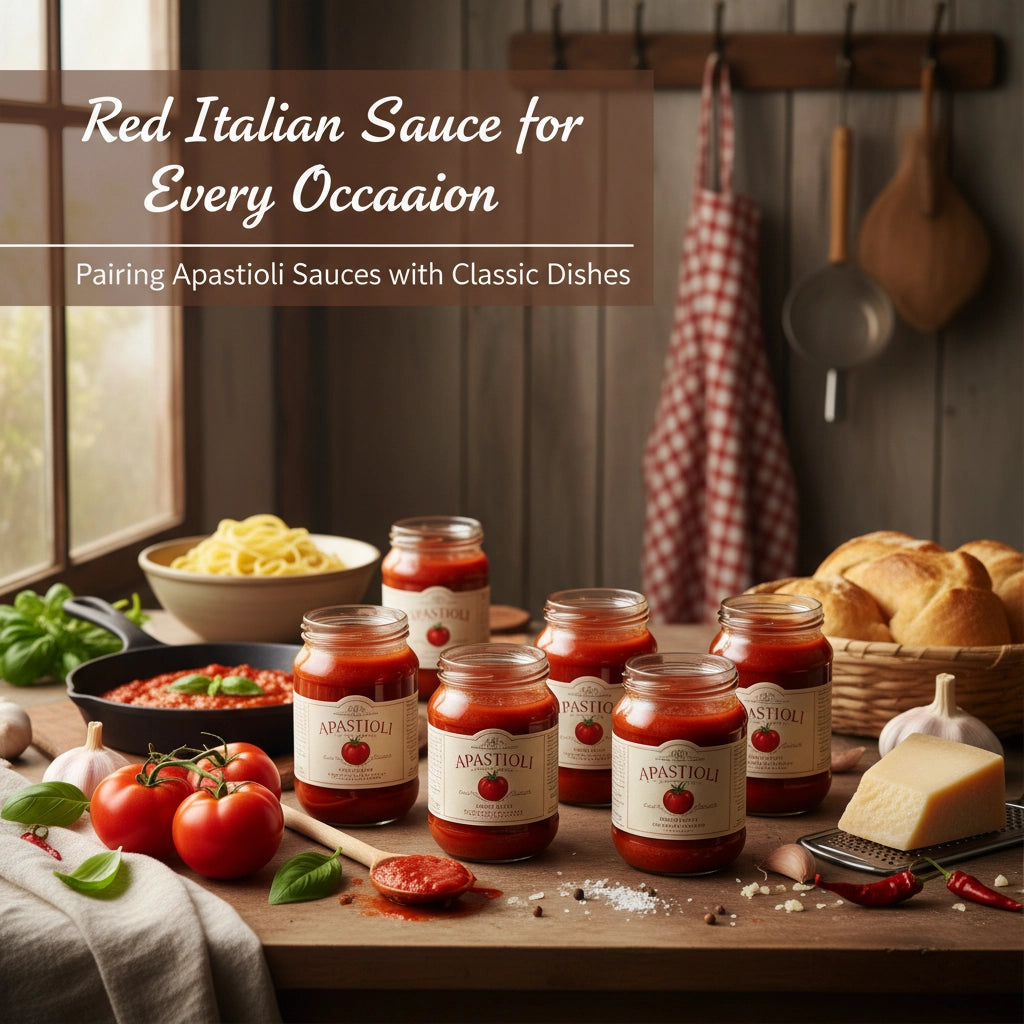
Red Italian Sauce for Every Occasion: Pairing Apastioli Sauces with Classic Dishes
Share
There's something magical about the moment a wooden spoon breaks through the surface of simmering red sauce, releasing that intoxicating aroma of tomatoes, garlic, and fresh herbs. It's a scent that transcends generations, connecting us to countless family kitchens where love was measured not in cups or tablespoons, but in the patience required to craft something truly special.
At Apastioli, we understand that red sauce isn't just a condiment: it's the soul of Italian cooking, the foundation upon which memorable meals are built. Our journey with Italian red sauce began with a simple belief: that the finest ingredients, treated with respect and given time to develop their full potential, create something far greater than the sum of their parts.
The Art of Sauce Selection
Every great pairing begins with understanding your canvas. Our Classic Italian Red Sauce captures the essence of traditional Italian cooking with San Marzano tomatoes, fragrant garlic, fresh basil, and pure olive oil. But the beauty lies in recognizing that different dishes call for different expressions of this timeless combination.
When I first learned to cook from my grandmother, she taught me that sauce selection was like choosing the right words for a poem. The Tomato Fresh Basil Marinara speaks in bright, clean notes: perfect for delicate preparations where you want the other ingredients to shine through. Meanwhile, our Garlic Onion Marinara offers a deeper, more complex conversation, ideal for hearty dishes that can stand up to its robust personality.
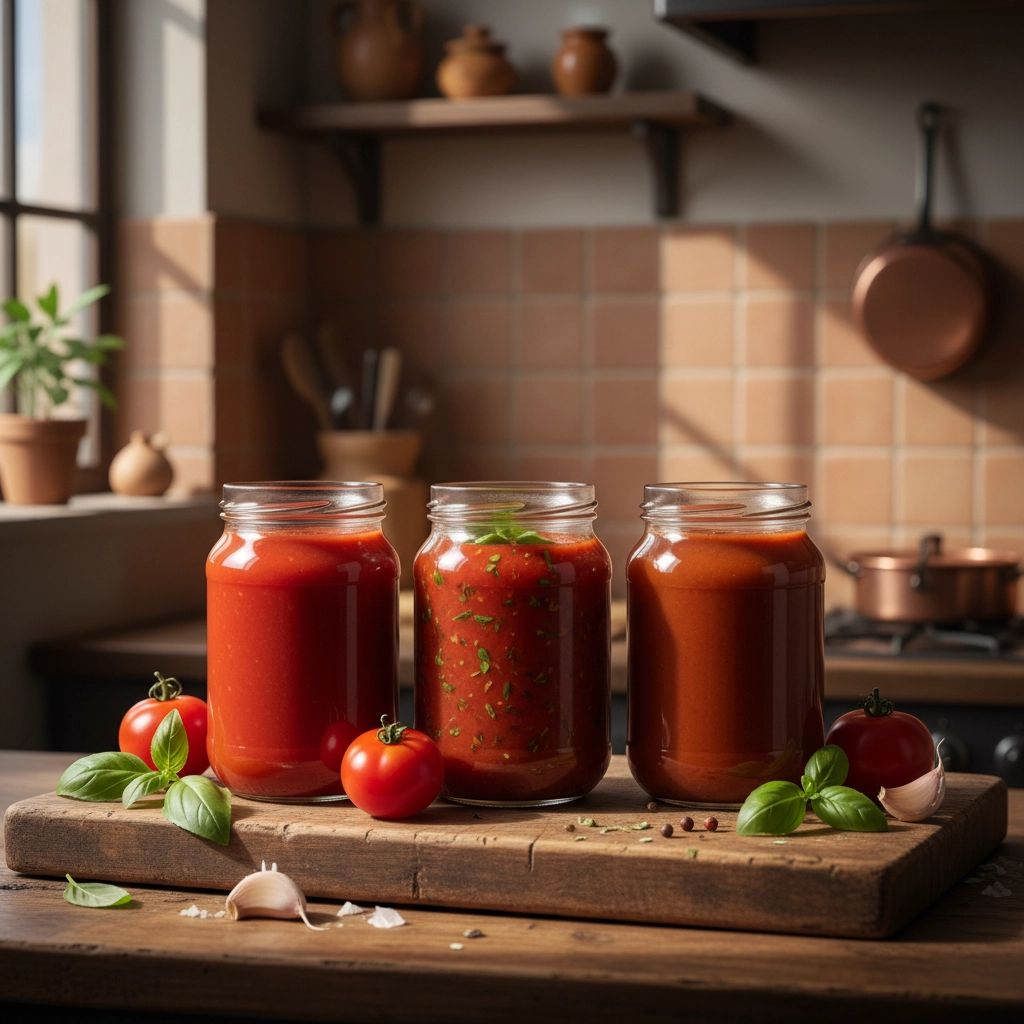
Pasta: The Perfect Canvas
There's an intimacy to tossing fresh pasta with warm sauce that never loses its appeal. The steam rises, carrying with it the promise of comfort and satisfaction. For long pasta varieties like spaghetti and linguine, the Classic Italian Red Sauce creates silky ribbons that coat each strand beautifully. The secret lies in reserving a cup of pasta water before draining: that starchy, salty liquid becomes the bridge that helps sauce and pasta become one harmonious dish.
Short pasta shapes tell a different story. Rigatoni, with its ridged exterior and hollow center, captures pockets of sauce like little flavor treasures. Penne and ziti create delightful surprises with each bite as the sauce nestles into their tubes. When preparing these heartier pasta dishes, I often add a splash of the pasta cooking water directly to the sauce, creating a glossy finish that speaks of professional kitchens and generations of Italian wisdom.
For special occasions, fresh pasta elevates the experience to something transcendent. Hand-rolled pappardelle or pillowy gnocchi absorb the sauce's flavors while maintaining their own distinct character. These moments remind us why cooking is more than sustenance: it's an expression of care, creativity, and connection to our culinary heritage.
Building Layers: Meat and Protein Pairings
The relationship between red sauce and protein is one of mutual enhancement. Each element brings out the best in the other, creating dishes that satisfy both body and soul. Our sauces provide an ideal braising medium for meatballs, allowing them to slowly absorb the tomato and herb flavors while contributing their own savory richness back to the sauce.
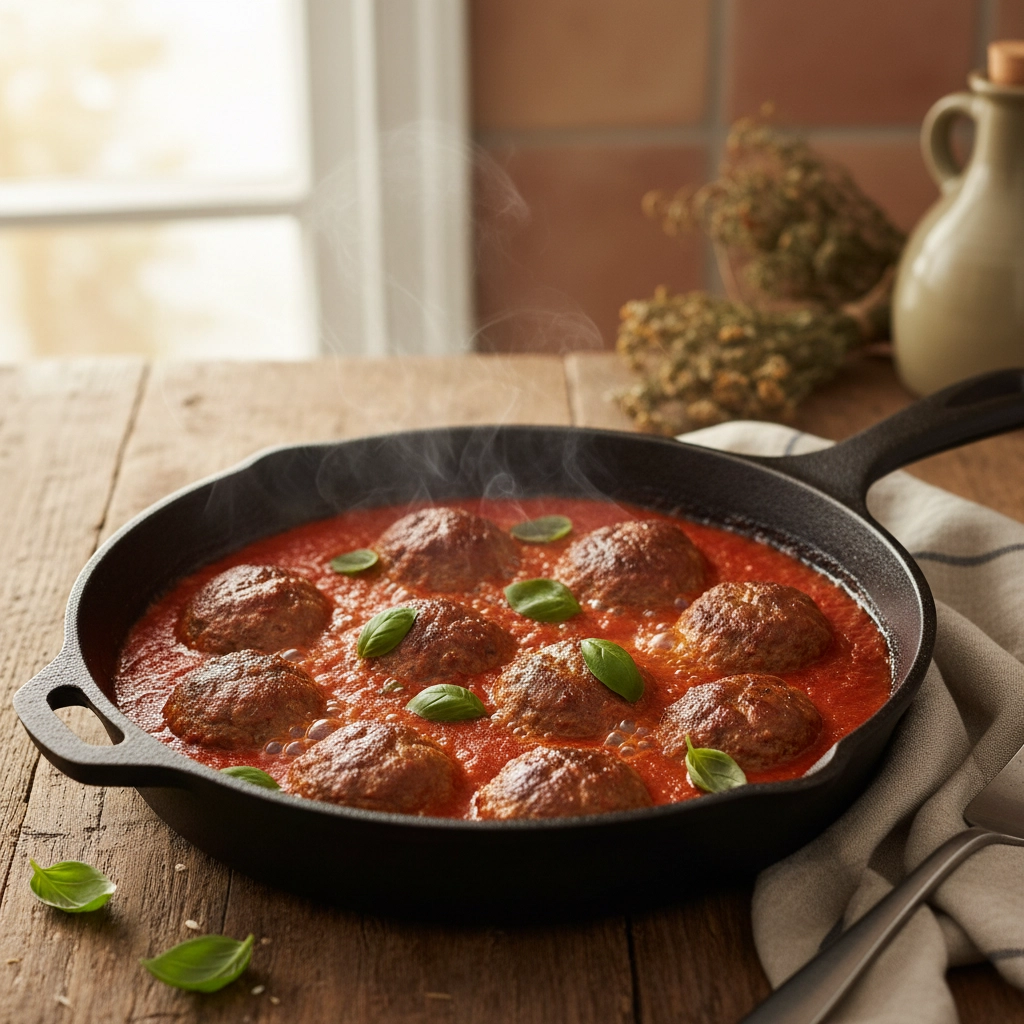
Italian sausages benefit tremendously from a gentle simmer in red sauce. The cooking process mellows any harsh spices while the meat's rendered fat enriches the sauce's body and depth. This technique transforms simple ingredients into something restaurant-worthy, proving that patience and quality ingredients are often more valuable than complex techniques.
For chicken parmigiana, the red sauce serves as more than just a topping: it's the crucial layer that binds the crispy, golden cutlet to the melting mozzarella above. The sauce's acidity cuts through the richness of the cheese and fried coating, creating perfect balance in every bite.
Braised dishes like osso buco or stuffed beef rolls (braciole) showcase red sauce's ability to tenderize while infusing deep flavor. The long, slow cooking allows tough cuts to become melt-in-your-mouth tender while the sauce reduces and concentrates, creating a luxurious finish that speaks of Sunday family dinners and special celebrations.
The Architecture of Comfort: Layered and Baked Dishes
There's an architectural beauty to layered Italian dishes that never fails to inspire. Lasagna, perhaps the most celebrated of these constructions, relies on red sauce to provide structure and flavor balance between layers of pasta, rich ricotta, and melting mozzarella. Each layer tells part of the story, but it's the sauce that acts as narrator, weaving the flavors together into a cohesive, satisfying whole.
Baked ziti and stuffed shells demonstrate red sauce's versatility in creating comfort food that feeds both family and soul. The sauce provides essential moisture during baking while developing those coveted caramelized edges where it meets the hot ceramic. These golden-brown patches offer concentrated flavor that contrast beautifully with the creamy, melted cheese within.
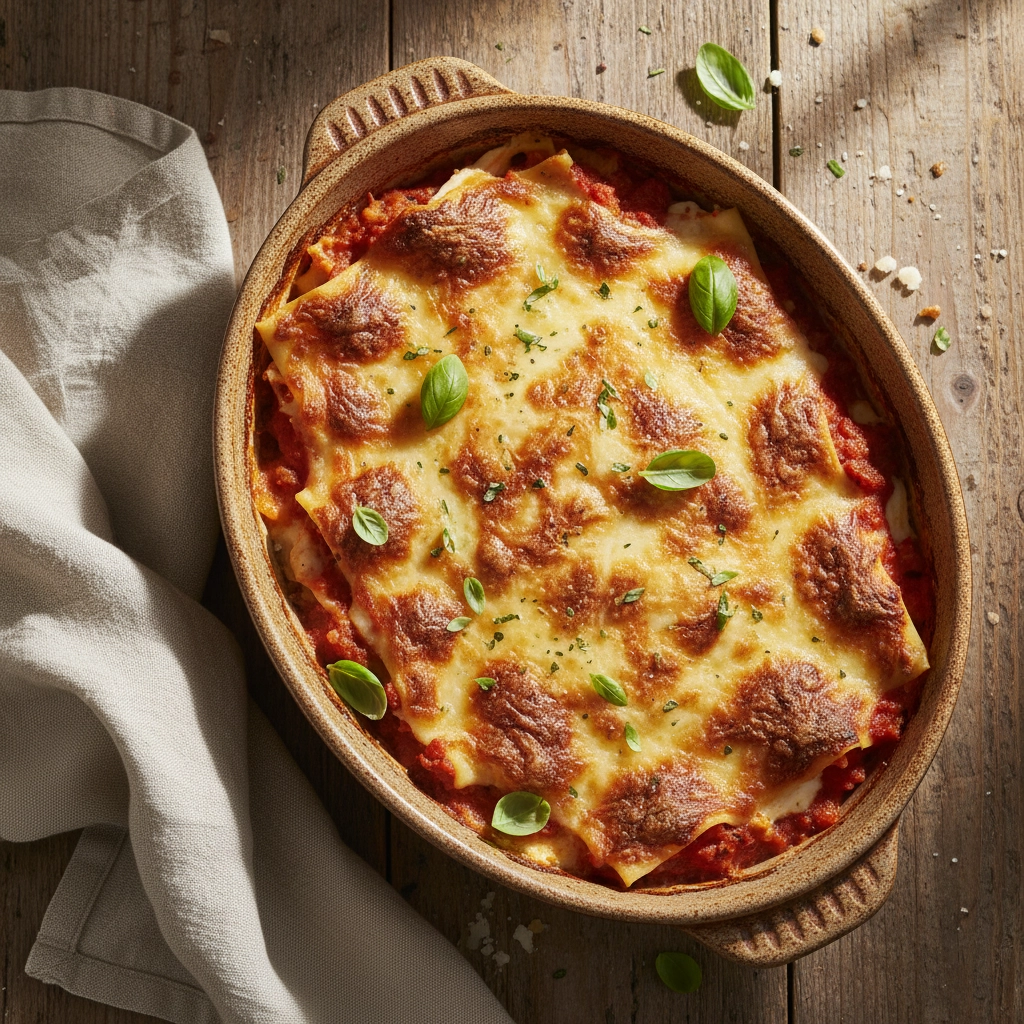
Eggplant parmigiana holds a special place in my heart as it showcases how red sauce can elevate vegetables to main-dish status. The sauce's bright acidity complements the eggplant's mild earthiness while the layering technique creates textural interest that keeps every bite engaging.
Beyond the Expected: Creative Applications
Our Pizza Sauce opens doors to endless creativity. While pizza is the obvious application, this concentrated blend works beautifully on focaccia, creating an appetizer that transforms simple bread into something memorable. Stromboli and calzones showcase the sauce's ability to complement bold ingredients like pepperoni, Italian sausage, and aged cheeses without being overwhelmed.
The beauty of quality red sauce extends beyond Italian classics. It serves as an excellent base for shakshuka-style baked eggs, where the sauce's robust flavor provides the perfect foundation for runny yolks and fresh herbs. As a dipping sauce for crusty bread or homemade mozzarella sticks, it transforms simple ingredients into satisfying appetizers that bring people together around the table.
The Simple Pleasures
Sometimes the most profound culinary experiences come from the simplest preparations. Pasta al pomodoro: nothing more than quality pasta tossed with warmed red sauce, a drizzle of good olive oil, and freshly grated Parmigiano-Reggiano: proves that excellence doesn't require complexity. These moments of simplicity allow the sauce's San Marzano tomatoes and fresh herbs to speak clearly, without distraction or competition.
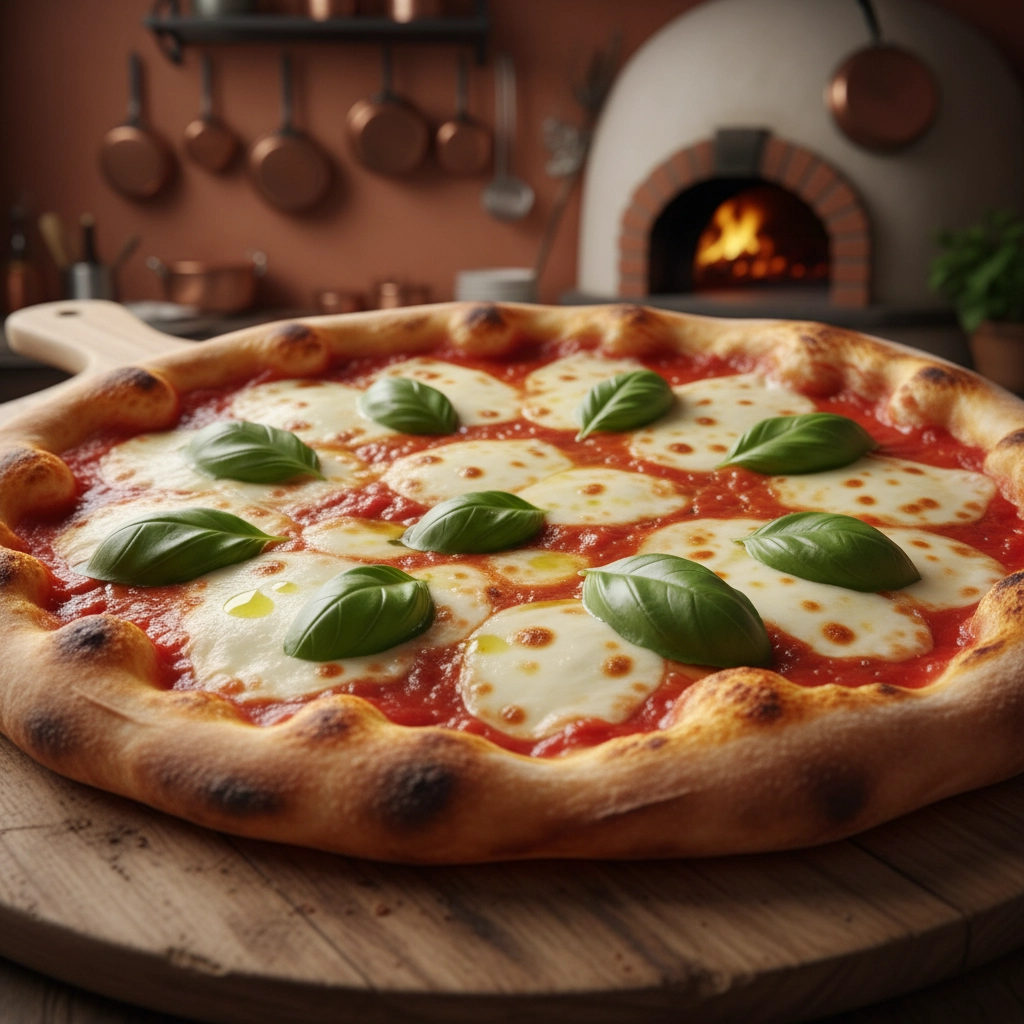
This minimalist approach works particularly well for weeknight dinners when time is precious but the desire for something satisfying remains. The key lies in using the best possible ingredients and treating them with respect: warming the sauce gently, not boiling it aggressively, and finishing with high-quality cheese that melts into silky perfection.
Personalizing Your Approach
While our sauces are carefully crafted to be perfect as they are, the joy of cooking lies in making dishes your own. A pinch of red pepper flakes transforms any red sauce into an arrabbiata-style celebration of heat and flavor. A splash of heavy cream creates an instant vodka sauce variation that pairs beautifully with penne or rigatoni.
For longer-braised dishes, a splash of good red wine adds depth and complexity while the alcohol cooks off, leaving behind concentrated flavor that speaks of rustic Italian trattorias. Fresh herbs stirred in just before serving: basil, oregano, or even a handful of fresh parsley: brighten the entire dish and add visual appeal that makes every plate feel special.
The craft of pairing sauce with food is ultimately about understanding that cooking is a conversation: between ingredients, between cook and dish, and finally between food and those who share it. Each meal becomes an opportunity to create not just sustenance, but memory, connection, and joy.
When we approach cooking with this mindset, every sauce becomes a starting point for exploration, every dish an opportunity for creativity, and every meal a chance to nourish both body and spirit. This is the true art of Italian cooking: not just following recipes, but understanding the heart and soul that transforms simple ingredients into extraordinary experiences.
